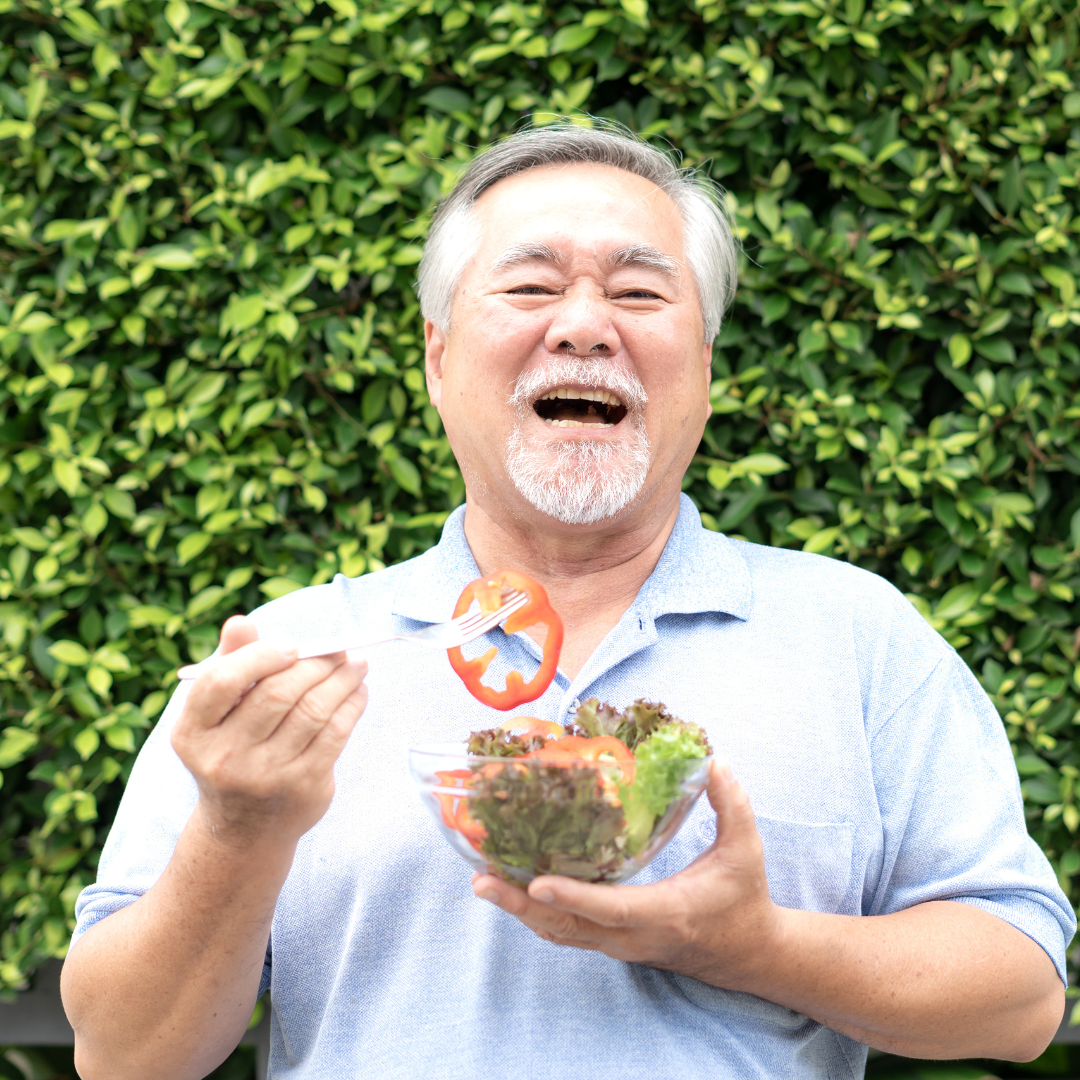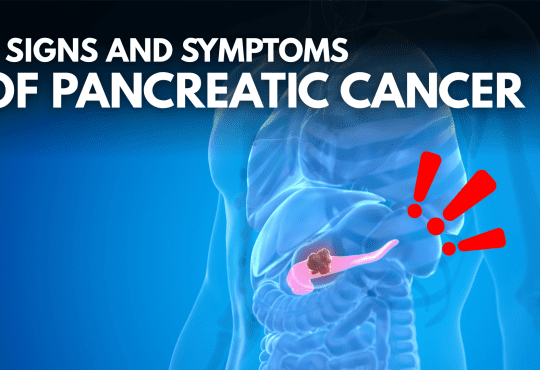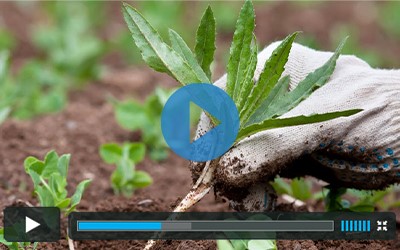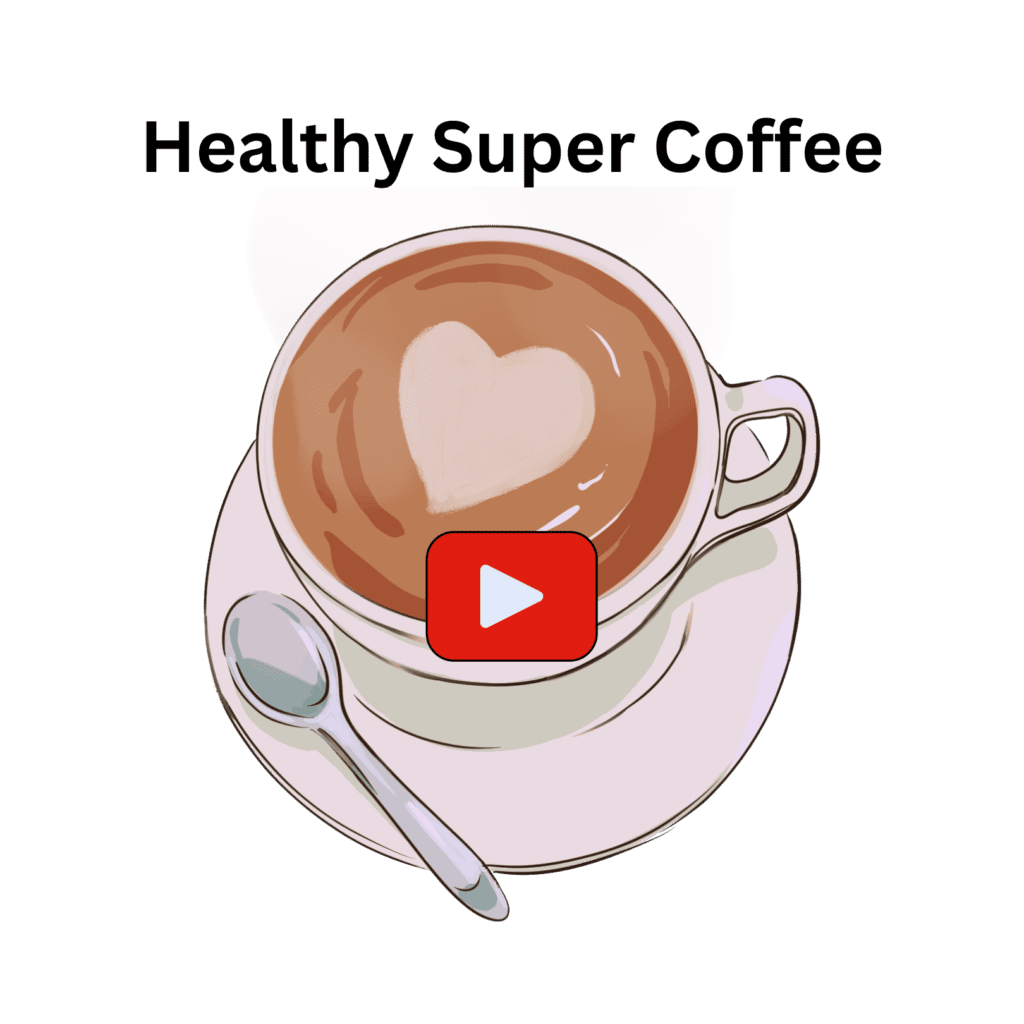
The Cancer Diet: What to Eat (and Avoid) to Lower Your Risk
Cancer is an insidious disease that affects millions of people worldwide.
It’s a terrifying diagnosis, as it often feels like a death sentence looming over your head.
The fear and anxiety associated with cancer are overwhelming, and the treatments available can be just as daunting – chemotherapy, radiation therapy, surgery – all with their own side effects and complications.
The problem begins when our cells start growing uncontrollably due to mutations in their DNA.
These mutations can occur spontaneously or be influenced by external factors such as exposure to harmful substances or unhealthy lifestyles.
As these abnormal cells continue to multiply rapidly without dying off naturally like healthy cells do, they form tumors which invade nearby tissues and organs causing damage and impairing function.
Now here’s something really interesting that you might not know: what you eat plays a significant role in determining your risk for developing cancer!
Research has shown that certain foods have the ability to protect against specific types of cancers while others may increase your risk.
Now, let’s dive deeper into these fascinating findings about how different foods impact our likelihood of getting diagnosed with cancer and explore the best dietary choices you can make to lower your risk and help you live a healthier, longer life.
First on our list is… Cruciferous vegetables, nature’s powerful warriors against cancer.
These vibrant veggies, including broccoli, cauliflower, cabbage, kale, and Brussels sprouts, don’t just bring a burst of color to your plate; they also offer a host of health benefits, including reduced risks for lung and colorectal cancers.
It’s like having a secret weapon against these notorious foes.
Cruciferous vegetables are like the superheroes of the produce aisle.
They contain a group of compounds called glucosinolates which when broken down, form bioactive compounds like sulforaphane, indole-3-carbinol, and isothiocyanates.
These compounds have caught the attention of researchers due to their potent anti-cancer properties.
Let’s start with lung cancer…
It’s a formidable opponent, but cruciferous vegetables have a trick up their sleeve.
A study published in the Journal of the National Cancer Institute found that individuals who consumed higher amounts of cruciferous vegetables had a reduced risk of lung cancer.
The researchers theorize that the bioactive compounds in these vegetables can help protect against the damaging effects of carcinogens found in tobacco smoke and other environmental pollutants.
But lung cancer isn’t the only nemesis these veggies can tackle…
Colorectal cancer, a common and often preventable form of cancer, has also been in the crosshairs of cruciferous vegetables.
Research published in the Annals of Oncology revealed that higher consumption of cruciferous vegetables was associated with a lower risk of colorectal cancer.
The sulforaphane and indole-3-carbinol present in these veggies have shown promising anti-cancer effects, such as inhibiting the growth of cancer cells and supporting detoxification processes in the body.
Now, it’s important to note that while these studies show promising associations between cruciferous vegetable consumption and reduced cancer risks, they don’t establish a cause-and-effect relationship.
However, they provide valuable insights into the potential benefits of incorporating these powerful veggies into our diet.
So, the next time you’re strolling through the grocery store or farmer’s market, make sure to pay a visit to the cruciferous section.
Grab some broccoli, cauliflower, cabbage, kale, or Brussels sprouts and let their cancer-fighting powers unleash in your body.
From lung cancer to colorectal cancer, these veggies have earned their spot in the pantheon of cancer-preventive foods.
The next important food on our list is whole grains…
When it comes to grains, we have two contenders: whole grains and refined grains.
Whole grains, like brown rice, quinoa, whole wheat, oats, and barley, are the heroes of our story.
They are grains in their purest form, with the bran, germ, and endosperm intact—packed with fiber, vitamins, minerals, and beneficial plant compounds.
Refined grains, on the other hand, have gone through a process that removes the bran and germ, leaving behind a refined, stripped-down version of the grain.
So, what’s the scoop on whole grains and colorectal cancer?
Brace yourself, because here comes the exciting part…
Research has shown that consuming whole grains instead of refined grains can significantly lower the risk of colorectal cancer.
It’s like arming yourself with a culinary shield against this notorious disease.
A study published in the journal Cancer Prevention Research found that individuals who consumed higher amounts of whole grains had a reduced risk of developing colorectal cancer.
The fiber in whole grains plays a starring role in this defense.
It’s a superstar nutrient that promotes healthy digestion, keeps things moving smoothly, and may help prevent cancer-causing compounds from lingering in the colon.
But wait, there’s more!
Whole grains also contain a plethora of bioactive compounds, such as antioxidants, phytochemicals, and minerals, which team up to fight against cancer.
These powerful plant compounds have been shown to inhibit the growth of cancer cells, reduce inflammation, and promote overall gut health.
Now, don’t be disheartened if you’ve been on team refined grains for a while.
It’s never too late to switch sides and embrace the whole grain goodness.
Start by incorporating whole grain versions of your favorite foods, like whole wheat bread, brown rice, or whole grain pasta, into your meals.
The transition can be as delicious as it is beneficial.
Of course, it’s worth mentioning that adopting a well-rounded, healthy lifestyle is key.
Pairing whole grains with the other cancer-fighting foods on our list can maximize their protective effect against colorectal cancer.
So, as you venture into your next culinary escapade, remember the power that lies within those tiny whole grains.
They’re not just a source of sustenance; they’re a defense strategy against colorectal cancer.
Let’s toast to the beauty of whole grains, as they bring us one step closer to a life filled with vibrant health and delicious meals.
Next on our list is Green Tea
Grab your teacups, because we’re about to explore the intriguing connection between this ancient beverage and the risk of breast cancer.
Green tea has been cherished for centuries, not just for its comforting warmth and refreshing taste, but also for its potential health benefits.
When it comes to breast cancer, research suggests that regularly indulging in green tea might offer some protective powers for women.
Now, let’s dive into the scientific world for a moment…
Studies have found that green tea contains a group of powerful compounds called catechins, with one specific catechin called epigallocatechin gallate (EGCG) taking center stage.
These bioactive compounds are believed to possess potent antioxidant and anti-cancer properties that could potentially help fend off breast cancer.
A meta-analysis published in the journal Cancer Causes & Control examined various studies and concluded that regular consumption of green tea was associated with a decreased risk of breast cancer.
The researchers observed that women who regularly drank green tea had a lower incidence of breast cancer compared to those who consumed it infrequently or not at all.
But let’s not forget that research is an ongoing journey, and it’s important to consider the limitations.
While these findings are promising, they don’t establish a cause-and-effect relationship.
Factors such as lifestyle, genetics, and other dietary habits can also influence breast cancer risk.
Nonetheless, green tea holds additional health benefits beyond its potential role in breast cancer prevention.
It’s a natural source of caffeine, which can provide a gentle energy boost without the jitters.
Plus, green tea is packed with polyphenols, which have been associated with various health benefits, including improved heart health and reduced inflammation.
So, the next time you’re in need of a comforting beverage, consider reaching for a cup of green tea.
Savor its delicate flavors, relish in its potential cancer-fighting qualities, and delight in the ancient wisdom that has been passed down through generations.
Let green tea be a delightful addition to your wellness routine, supporting your journey toward a healthier, happier you.
Cheers to good health and the simple pleasures found in a humble teacup!
Next up… Berries
These little bursts of color are not just eye-catching; they’re also packed with a powerhouse of nutrients that may help defend us against the lurking threat of cancer.
Let’s delve into their delicious secrets and uncover the research behind their potential cancer-fighting prowess.
Strawberries, blueberries, raspberries, and blackberries are like a dazzling orchestra of flavor, and their vibrant hues hold a clue to their health benefits.
These berries owe their vibrant colors to potent antioxidants, such as anthocyanins and flavonoids, which go to battle against those pesky free radicals in our bodies.
These free radicals can cause cellular damage and contribute to chronic inflammation, setting the stage for the development of various diseases, including cancer.
But fear not! These colorful delights bring reinforcements in the form of antioxidants, which swoop in to neutralize those pesky free radicals, effectively reducing oxidative stress and taming inflammation.
Research has indicated that this antioxidant power may offer protection against cancer, including the ever-dreaded breast cancer.
Studies have shed light on the potential benefits of berries in combating breast cancer.
For example, a study published in the journal Cancer Epidemiology, Biomarkers & Prevention found that women who consumed higher amounts of blueberries and strawberries had a lower risk of developing estrogen receptor-negative breast cancer—an aggressive form of the disease.
Another study in the International Journal of Cancer discovered that increased intake of anthocyanin-rich berries was associated with a reduced risk of breast cancer in postmenopausal women.
The magic lies within these vibrant fruits’ ability to counteract the effects of inflammation and oxidative stress.
Their natural compounds have demonstrated anti-cancer properties, such as inhibiting tumor growth, suppressing cancer cell proliferation, and triggering programmed cell death (apoptosis) in cancer cells.
Now, it’s important to note that incorporating berries into your diet won’t guarantee immunity against cancer, and individual factors, including genetics and lifestyle, play a role too.
But adding these tasty treats to your culinary repertoire is a delightful way to bolster your health and potentially reduce the risk of various cancers, including breast cancer.
So, whether you’re sprinkling berries onto your morning oatmeal, blending them into a luscious smoothie, or simply enjoying them as a refreshing snack, relish in the knowledge that you’re giving your body a colorful boost of antioxidants and potentially safeguarding against cancerous threats.
So, let’s celebrate the power of these tiny, mighty berries and embrace their potential to keep us healthy, one juicy bite at a time.
Enjoy the berrylicious journey to a healthier you!
Now, let’s move on to another important anti-cancer food on our list… Dark leafy greens.
Dark, leafy greens are like the superheroes of the vegetable kingdom—strong, packed with nutrients, and ready to defend our bodies against the threat of cancer.
Spinach, kale, Swiss chard, and their green comrades are the nutritional powerhouses we all need in our lives.
Let’s dive into the emerald world of these leafy wonders and discover how they might play a role in reducing the risk of various cancers, including breast, lung, and colorectal cancers.
When it comes to health, these greens mean business…
They are rich in fiber, which keeps our digestive system humming along smoothly and supports a healthy gut.
But that’s not all…
Dark, leafy greens are also loaded with a plethora of vitamins, minerals, and antioxidants that work in harmony to promote overall well-being.
Let’s talk antioxidants…
These mighty defenders swoop in to neutralize harmful free radicals and protect our cells from damage.
The antioxidants found in dark, leafy greens, such as vitamins C and E, beta-carotene, and various phytochemicals, have caught the attention of researchers exploring their potential anti-cancer properties.
Studies have suggested that the impressive nutrient profile of dark, leafy greens may offer protective effects against several types of cancer.
For example, research published in the International Journal of Cancer found that higher intakes of leafy green vegetables were associated with a reduced risk of colorectal cancer.
Another study published in the Journal of the National Cancer Institute revealed that higher consumption of cruciferous and leafy green vegetables was linked to a lower risk of lung cancer.
But let’s not stop there…
Breast cancer, a concern for many women, is another target that dark, leafy greens may help protect against.
A study published in the journal Cancer Causes & Control found that higher intakes of leafy green vegetables were associated with a reduced risk of breast cancer in postmenopausal women.
The key lies in the potent combination of nutrients found in these greens.
The fiber supports healthy digestion, while the vitamins and minerals play vital roles in various bodily functions, including immune health and DNA repair.
The antioxidants, such as flavonoids and carotenoids, have been shown to have anti-inflammatory and anti-cancer properties, helping to combat the cellular damage that can lead to cancer development.
So, whether you’re tossing spinach into a refreshing salad, sautéing kale with garlic and olive oil, or adding Swiss chard to a wholesome stir-fry, you’re fueling your body with a myriad of health-boosting compounds.
Dark, leafy greens are an invitation to vibrant well-being.
So, let’s celebrate the magnificence of these verdant warriors and embrace their potential to protect us against cancer, one delectable bite at a time.
Now that we’ve explored the nutritional superheroes that can potentially reduce the risk of cancer, let’s shift our focus to the villains that we should approach with caution.
While no single food can guarantee the development of cancer, certain dietary choices have been associated with an increased risk.
It’s essential to be aware of these foods and make informed decisions to promote a healthier lifestyle.
Now, let’s uncover the culprits that should be on our radar and learn how to navigate the culinary landscape wisely.
The first food to avoid is… High-Sodium Foods
Let’s dive into the world of sodium and its potential impact on stomach cancer…
While salt adds flavor and enhances the taste of our meals, excessive sodium intake has raised concerns in the realm of cancer prevention, particularly when it comes to the stomach.
So, let’s sprinkle some knowledge, explore the research, and discover how we can navigate the salty waters to reduce our risk.
It’s no secret that sodium is a staple in many diets, especially in the form of salt.
However, diets high in sodium have been associated with an increased risk of stomach cancer.
You might be wondering how that innocent sprinkle of salt on your fries or that savory canned soup can lead to such consequences.
Let’s uncover the story…
Research has shown that diets rich in sodium, particularly those containing excessive amounts of salt, processed meats, and canned foods, have been linked to an elevated risk of stomach cancer.
Excessive sodium intake can lead to the development of a certain type of bacteria called Helicobacter pylori, which is a known risk factor for stomach cancer.
Additionally, high sodium intake may cause chronic inflammation in the stomach lining, further increasing the risk.
To navigate the salty seas, it’s important to be mindful of your salt intake…
The World Health Organization (WHO) recommends consuming less than 5 grams (about one teaspoon) of salt per day to reduce the risk of high blood pressure, cardiovascular disease, and, potentially, stomach cancer.
However, it’s worth noting that individual salt sensitivity and susceptibility to stomach cancer can vary.
Instead of relying solely on salt, consider exploring alternative ways to enhance the flavor of your meals.
Get creative in the kitchen and experiment with herbs, spices, and other natural flavorings.
Fresh or dried herbs like basil, rosemary, thyme, and oregano can add a burst of taste without relying heavily on salt.
Spices like turmeric, cumin, paprika, and cinnamon can bring exciting flavors to your dishes.
Embrace the colorful array of flavor possibilities and let your taste buds dance to the rhythm of new sensations.
By reducing sodium intake and opting for natural flavor enhancers, you can embark on a journey to lower your risk of stomach cancer.
Be conscious of the sodium content in processed foods, including deli meats, canned soups, and snack items, as they can contribute significantly to your overall sodium intake.
Reading food labels, choosing low-sodium options, and preparing meals from scratch whenever possible are steps in the right direction.
Next on our list to avoid are… Sugary Drinks
Sodas, fruit juices, and energy drinks might quench our thirst momentarily, but their sugary embrace comes with a price.
Brace yourself for a sip of knowledge as we explore the risks associated with these tempting elixirs and discover healthier alternatives to quench our thirst.
When it comes to sugary beverages, indulging in them on a regular basis can have detrimental effects on our health.
These liquid delights have been linked to an increased risk of obesity, type 2 diabetes, and certain types of cancer.
It’s as if they carry a hidden agenda, disguising their harmful nature with enticing flavors and instant gratification.
Research has unveiled the troubling connection between sugary beverages and their impact on our well-being.
Regular consumption of these sugary elixirs can contribute to weight gain and obesity, primarily due to their high calorie content and ability to disrupt our body’s natural hunger cues.
This excess weight gain can then increase the risk of developing various types of cancers, such as breast, colorectal, and pancreatic cancers.
But it doesn’t end there…
The sugary overload in these beverages can also wreak havoc on our blood sugar levels, increasing the risk of developing type 2 diabetes.
The concentrated dose of sugar floods our system, causing rapid spikes in blood glucose and putting a strain on our body’s insulin response over time.
So, how do we quench our thirst without falling into the sugary trap?
Fear not, for there are healthier alternatives waiting to refresh us…
Let’s start with the simplest and most essential option: water.
It’s nature’s elixir, hydrating us without any added sugars or calories.
Jazz it up by infusing it with slices of lemon, cucumber, or mint for a burst of flavor.
If you’re seeking a little more excitement, unsweetened herbal teas are a fantastic choice.
They come in a myriad of flavors, offering both hydration and a delightful taste experience.
Explore options like chamomile, peppermint, or hibiscus for a soothing and refreshing beverage.
For those craving a touch of sweetness, try infused water with natural fruit flavors.
Simply drop slices of fresh berries, citrus fruits, or cucumber into your water for a hint of natural sweetness.
It’s a delightful way to enhance the taste without relying on added sugars.
By making these healthier beverage choices, we not only reduce our intake of added sugars but also provide our bodies with the hydration and nourishment they truly need.
As we sip on water, unsweetened herbal teas, or infused water, we’re granting ourselves a refreshing break from the risks associated with sugary beverages.
So, let’s reevaluate our drink choices, bid farewell to the sugary seductresses, and embrace the hydrating power of water and other healthier alternatives.
By doing so, we quench our thirst while safeguarding our bodies against the perils of obesity, type 2 diabetes, and the potential cancerous consequences of sugary indulgence.
Cheers to a healthier, more refreshing journey ahead!
Next on our list to avoid are Charred or Overcooked Foods
When it comes to cooking, we often aim to achieve that perfect char, the enticing grill marks, or the satisfying crunch.
However, it’s important to be mindful of the potential risks lurking in the flames.
Cooking foods at high temperatures, such as grilling, frying, or broiling, can give rise to harmful substances known as heterocyclic amines (HCAs) and polycyclic aromatic hydrocarbons (PAHs), which have been associated with an increased risk of cancer.
But fear not, for there are ways to minimize exposure and still enjoy delicious, flavorful meals.
Let’s start with the science behind it all…
When food comes into contact with intense heat, like the searing flames of a grill or the scorching oil of a frying pan, chemical reactions occur.
These reactions can create HCAs and PAHs, which have been identified as potential carcinogens.
HCAs form when amino acids and creatine, found in animal products, react at high temperatures.
PAHs, on the other hand, are produced when fat and juices from meat drip onto hot surfaces and create smoke, allowing the PAHs to adhere to the food.
To minimize the formation of these harmful compounds, it’s essential to avoid excessive charring or burning of food.
While a little bit of browning can add flavor and texture, it’s best to keep it in moderation.
Additionally, adopting gentler cooking methods can help reduce exposure.
Consider baking, steaming, or sautéing your favorite ingredients instead of subjecting them to high-temperature grilling or frying.
These methods allow you to retain the natural flavors and nutrients of the food while minimizing the formation of HCAs and PAHs.
Marinating your meat before cooking is another smart move.
Studies have shown that marinating meat in mixtures containing herbs, spices, citrus juices, or vinegar can help reduce the formation of HCAs.
The marinating process acts as a protective barrier, preventing direct contact between the meat and the high heat.
Moreover, adding a variety of herbs and spices to your meals can provide more than just flavor.
Many herbs and spices, such as rosemary, thyme, turmeric, and garlic, contain natural antioxidants that can potentially counteract the formation of harmful compounds during cooking.
So, embrace the aromatic world of seasonings and use them liberally in your culinary creations.
By making these conscious choices, we can still enjoy delicious, mouthwatering meals while reducing the potential risks associated with high-temperature cooking.
It’s all about finding a balance between flavor and safety.
So, the next time you’re in the kitchen, take a moment to consider your cooking methods.
Embrace baking, steaming, or sautéing as healthier alternatives. Moderate your charring to avoid excessive formation of HCAs and PAHs.
And don’t forget to explore the vast array of herbs and spices to enhance the taste and add a touch of natural protection.
With a little culinary wisdom and a focus on mindful cooking practices, we can savor the flavors of our favorite dishes without compromising our health.
So, let’s fire up the oven, embrace the gentle sizzle of sautéing, and savor the journey to a safer, more delectable dining experience.
Bon appétit, with a side of caution!
Last but not least is Highly Processed and Ultra-Processed Foods
Ah, the tempting allure of pre-packaged snacks, sugary cereals, fast food, and convenience meals…
They might offer convenience and immediate gratification, but let’s take a closer look at these culinary culprits and their potential consequences for our health.
Brace yourself as we uncover the truth about these not-so-innocent edibles and explore the path to healthier choices.
These foods have become staples in our modern lives, providing quick solutions for our busy schedules and instant satisfaction for our taste buds.
However, their regular consumption can come at a cost.
Pre-packaged snacks, sugary cereals, fast food, and convenience meals are often laden with unhealthy fats, added sugars, and excessive sodium, creating a trifecta of dietary danger.
One of the most concerning outcomes of indulging in these foods is the increased risk of obesity.
These calorie-dense options, combined with their addictive flavors, can lead to overconsumption and weight gain.
Obesity, in turn, is associated with a higher risk of numerous health issues, including type 2 diabetes and certain types of cancer.
Let’s talk about type 2 diabetes, a condition that has reached epidemic proportions in recent years.
The excessive intake of added sugars found in sugary cereals, sweet snacks, and fast food beverages can wreak havoc on our blood sugar levels.
This can ultimately lead to insulin resistance, a hallmark of type 2 diabetes.
By opting for whole, minimally processed foods, we can significantly reduce our intake of added sugars and lower our risk of developing this chronic disease.
And the cancer connection cannot be ignored…
Research has shown that diets high in unhealthy fats, added sugars, and processed foods are associated with an increased risk of certain cancers, such as colorectal, pancreatic, and breast cancers.
The high levels of unhealthy fats, including trans fats and saturated fats, combined with the presence of chemical additives and preservatives in these foods, may contribute to the development of cancerous cells in the body.
So, let’s pause for a moment and reconsider our food choices…
Instead of reaching for pre-packaged snacks, sugary cereals, fast food, and convenience meals, let’s prioritize whole, minimally processed foods that can nourish our bodies and protect us from the perils of excessive fats, added sugars, and sodium.
And there you have it, a list of foods to eat (and avoid) to lower your cancer risk…
Remember, the choices we make when it comes to our diet can have a profound impact on our health.
By opting for nutrient-rich foods, embracing healthier cooking methods, and steering clear of foods that increase our risk of cancer, we can empower ourselves to lead a more vibrant and resilient life.
Now, here’s a question for you: What steps will you take to incorporate these healthier choices into your daily routine?
Share your thoughts, experiences, and favorite recipes in the comments below.
Let’s inspire each other to make positive changes and embark on a journey towards optimal well-being.









